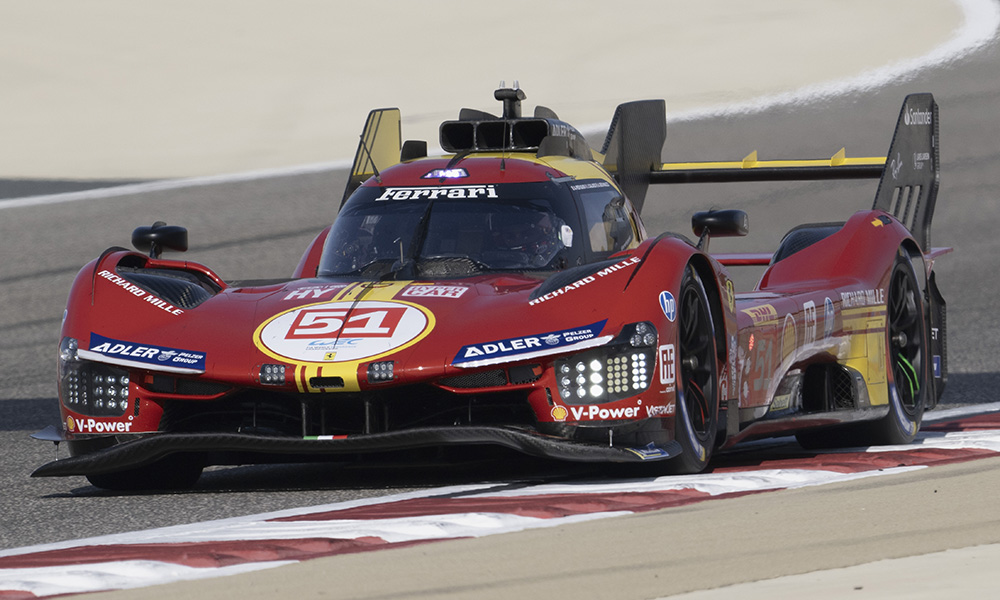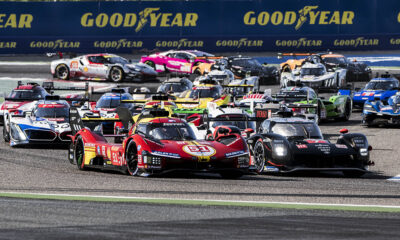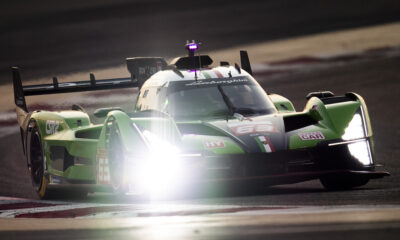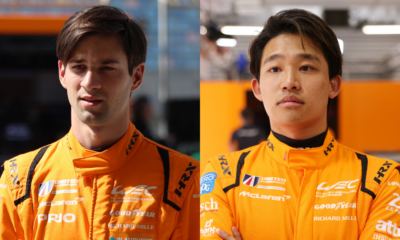
Photo: Ferrari
Ferrari has offered an explanation of the penalty handed to the No. 51 crew that initially finished second in the FIA World Endurance Championship season-closer in Bahrain for exceeding its allocation of 28 tires across qualifying and the race.
Antonio Giovinazzi, sharing the No. 51 Ferrari 499P with James Calado and Alessandro Pier Guidi, crossed the line second in Saturday’s eight-hour finale after wresting the position away from the No. 5 Penske Porsche 963 on the final lap of the race.
However, post-race the No. 51 car was given a four minute, 55 second penalty for exceeding its tire allocation by two, dropping it to 14th and last in Hypercar.
On Sunday, Ferrari issued a press release giving its version of events, which underlined that the No. 51 car had only used the regulation 26 tires across qualifying and the race – but that two of the tires used were from outside of its allocation.
The press release read: “Following the race, the Stewards issued Decision No. 40, penalising car No. 51 and relegating it to 14th position. According to the document, the car used 28 tires rather than the 26 permitted for qualifying and the race.
“In fact, the team respected the 26-tire limit. However, because of a mistake, during the race they used the tires fitted to the car for the grid formation instead of those scrubbed during qualifying and intended for the race.
“These two tires were not considered as part of the contingent allocated by the team, hence the Stewards’ decision.”
Ferrari head of endurance race cars Ferdinando Cannizzo provided further detail concerning the penalty when he addressed reporters on Sunday evening.
“All I can say in the race we ran 26 tires,” he said. “That’s it. What happened behind [the scenes], and the responsibility of what happened, is a different story that I would like to keep [internal]. Absolutely it was a mistake.
“For me, the way we ran, nothing would have changed. This is important. We didn’t gain any advantage, no disadvantage, nothing.”
Asked by Sportscar365 if he felt the punishment was too harsh, Cannizzo replied: “I don’t want to comment. The point is that, in my opinion, there are situations in which the stewards interpret the regulations, and other times they do not interpret them.
“The only point I can say is that we should push to have the same criteria in every race, in every situation. This is what I would like. What doesn’t work is when different criteria are applied in different situations.”
Cannizzo stated there was no connection between the Ferrari penalty and the fine handed to Michelin post-race for failing to provide the “correct list of references for tires for identification by RFID and barcode” at the deadline of 48 hours before the race.
Michelin was fined 15,000 euros, of which 10,000 euros are suspended until the end of the 2025 season, with the relevant stewards’ report stating that the correct list was only provided at 11:00 a.m. on Saturday, three hours ahead of the start of the race.
Staying Out Under Final VSC Didn’t Change Result
Cannizzo also discussed Ferrari’s strategy decision-making in the latter part of the Bahrain race after two safety car periods caused the lead that had been built up by the No. 51 car in the first half of the finale to be wiped away.
Along with the No. 6 Porsche, the No. 51 opted to stay out during the final virtual safety car period (which was followed by an actual safety car) in the penultimate hour, causing Giovinazzi to slip down the order when he took his final stop.
The Italian driver was finally able to fight his way back up from fifth to second, only passing Matt Campbell’s No. 5 Porsche at the start of the final lap.
But Cannizzo believes that the explosive pace of Toyota driver Sebastien Buemi, who went on to win by 27 seconds on the road, meant that the result would have been the same regardless of what Ferrari chose to do.
“We were in quite a favorable situation because we had enough energy to run, so at the next pit we should refuel less,” said Cannizzo. “At the same time we had a good combination because we were one of the best manufacturers with tires left. This led us to the conclusion that it was better not to lose track position, like the No. 6.
“Some others that didn’t lose anything, or they were in a different position, definitely benefited from pitting. They gained something for free.
“By our analysis probably we would have made the same decision [again], but the pace of the Toyota was completely out [of our expectations].
“If I had to step back, I would probably have pitted. But I don’t think it changed the result too much.”
Cannizzo added that the final margin between the winning Toyota and the No. 51 Ferrari was impacted by a slow final stop for the latter due to a congested pit lane.
“We lost eight or ten seconds,” he said. “Probably without that we were exiting [the pits] closer to Toyota, although it would have been difficult to match their pace. This is part of the game, but that is one of the reasons why there was such a big difference.”






















